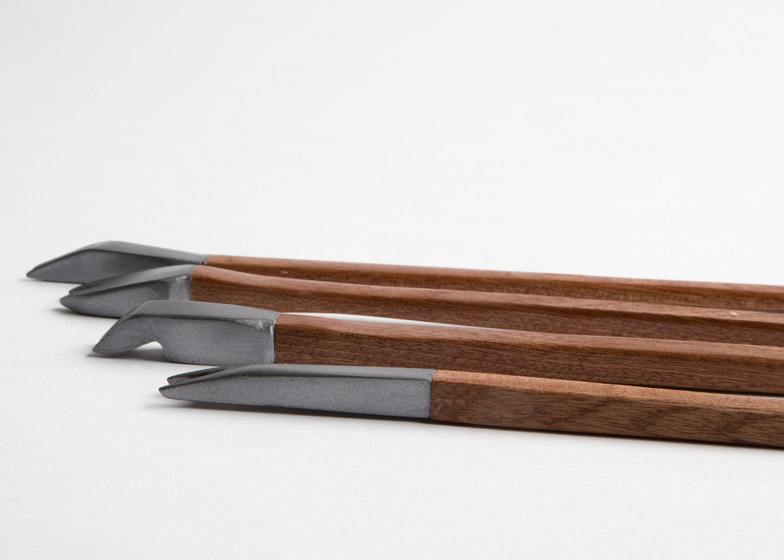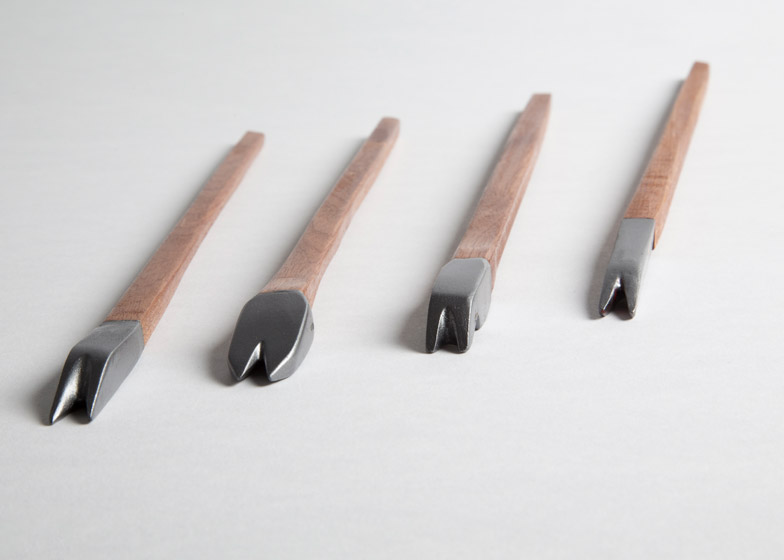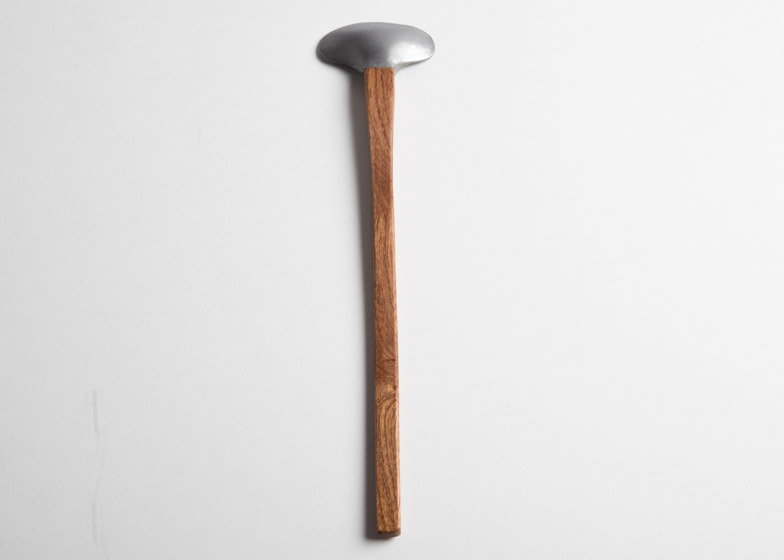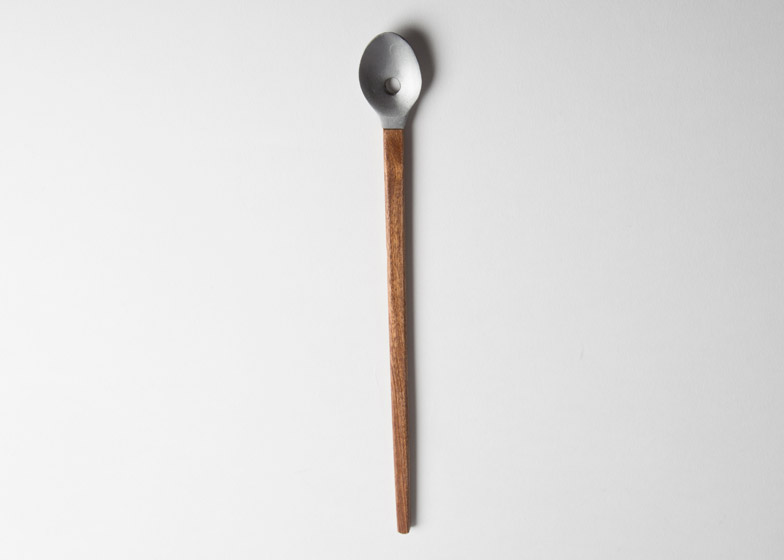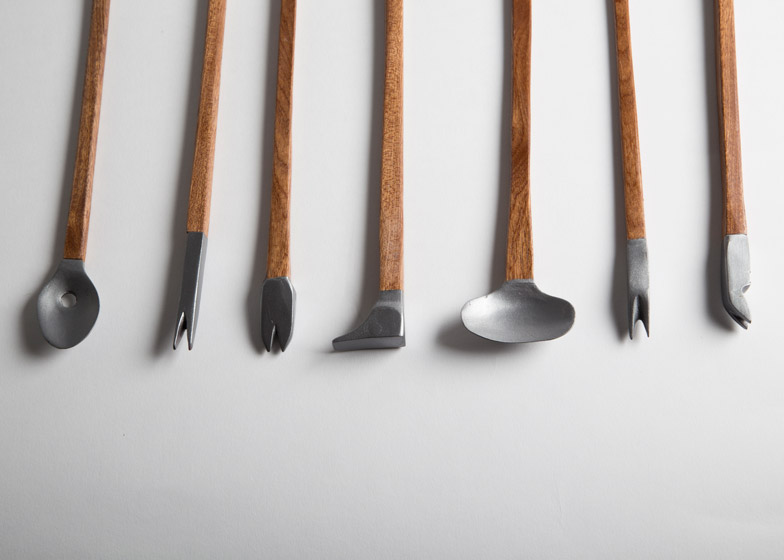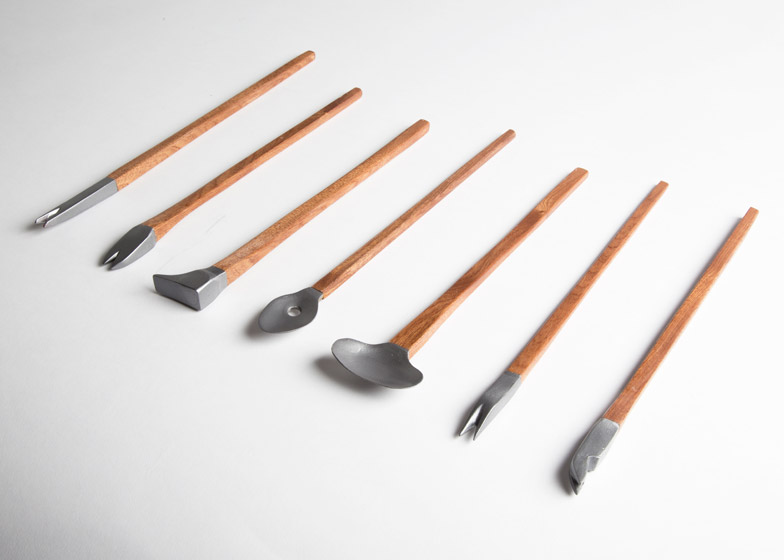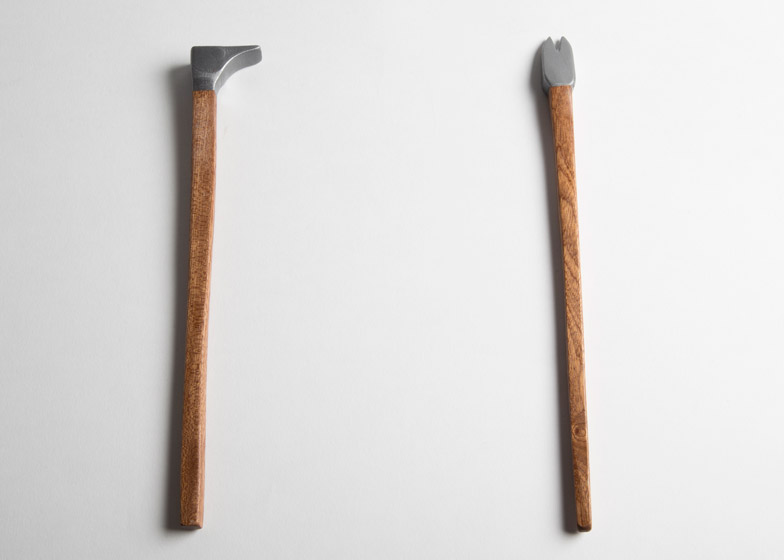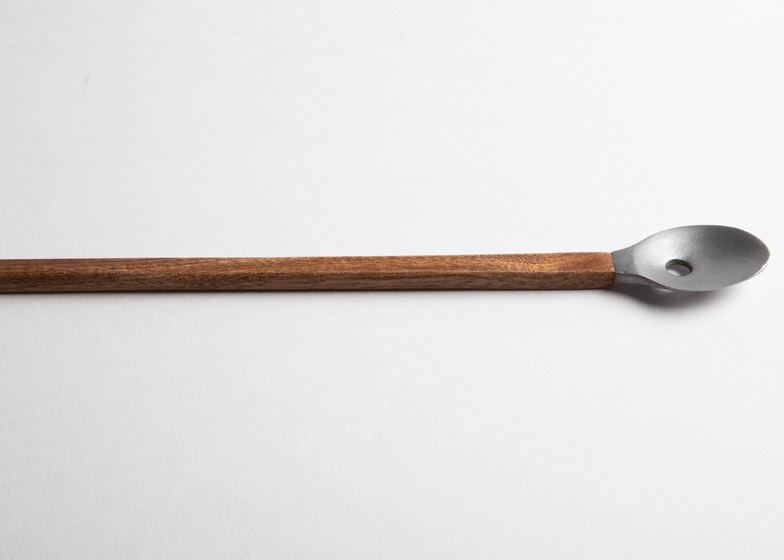Graduate shows 2015: Central Saint Martins graduate Firdaws Fourcroy has created a cutlery set that is deliberately difficult to eat with, aiming to help users relate to behaviour caused by schizophrenia (+ slideshow).
The Homemade Schizophrenia cutlery collection includes a fork that can only pick up one of rice grain at a time, a spoon that it too big to fit into the mouth, and a weak knife that cuts ineffectively. The heads are heavier than the handles and contain magnets, making them almost impossible to use.
Fourcroy has spent many years working closely with someone previously diagnosed as manic-depressive, whose diagnosis has recently been changed to one of schizoaffective disorder.
Patients experience a combination of symptoms including manic and depressed moods, and those of schizophrenia – a long-term mental health condition that can cause hallucinations and changes in behaviour.
The designer felt that the care for schizoaffective disorder was too focused on reducing so-called "abnormal" behaviours.
"There has been no interest in the pain she is going through and where it was coming from, only in how to transform her behaviour into something more socially acceptable," the designer told Dezeen. "This made me question normality and how we define it."
By creating a set of cutlery that forces users out of their normal eating habits, Fourcroy hopes to make other people question their definitions of normality.
"When someone repeats an action so much that they don't think about it anymore, it can be difficult to accept that someone else does the same thing differently," she said.
"My cutlery aims to challenge that. It is designed to disrupt everyday rituals, and render the user unproductive."
Inspired by the heavy, ornate, specialist cutlery of the Victorian era – such as asparagus forks – the Homemade Schizophrenia cutlery pieces have elongated wooden handles and unfamiliar stainless steel heads.
"They are designed for people who think of themselves as 'normal', for people who haven't thought about what it might feel like to be cut off, to be put aside from society and be considered abnormal," the designer told Dezeen.
Fourcroy's graduate project was presented at Central Saint Martin's summer exhibition in London last month, where a pair of comically long shoes was also on show.
A variety of new designers have aimed to address mental health issues in their work. For example, Esrawe's table inspired by obsessive compulsive disorder comprises a series of small trays for storing individual items to keep them separate from one another and easy to find.
New Zealand designer Ramon Telfer used his own experiences of panic attacks to design a hand-held device to help alleviate symptoms of stress and anxiety, while Design Academy Eindhoven graduate Eléonore Delisse created a lamp to counter seasonal affective disorder by displaying different colours at different times of day.










